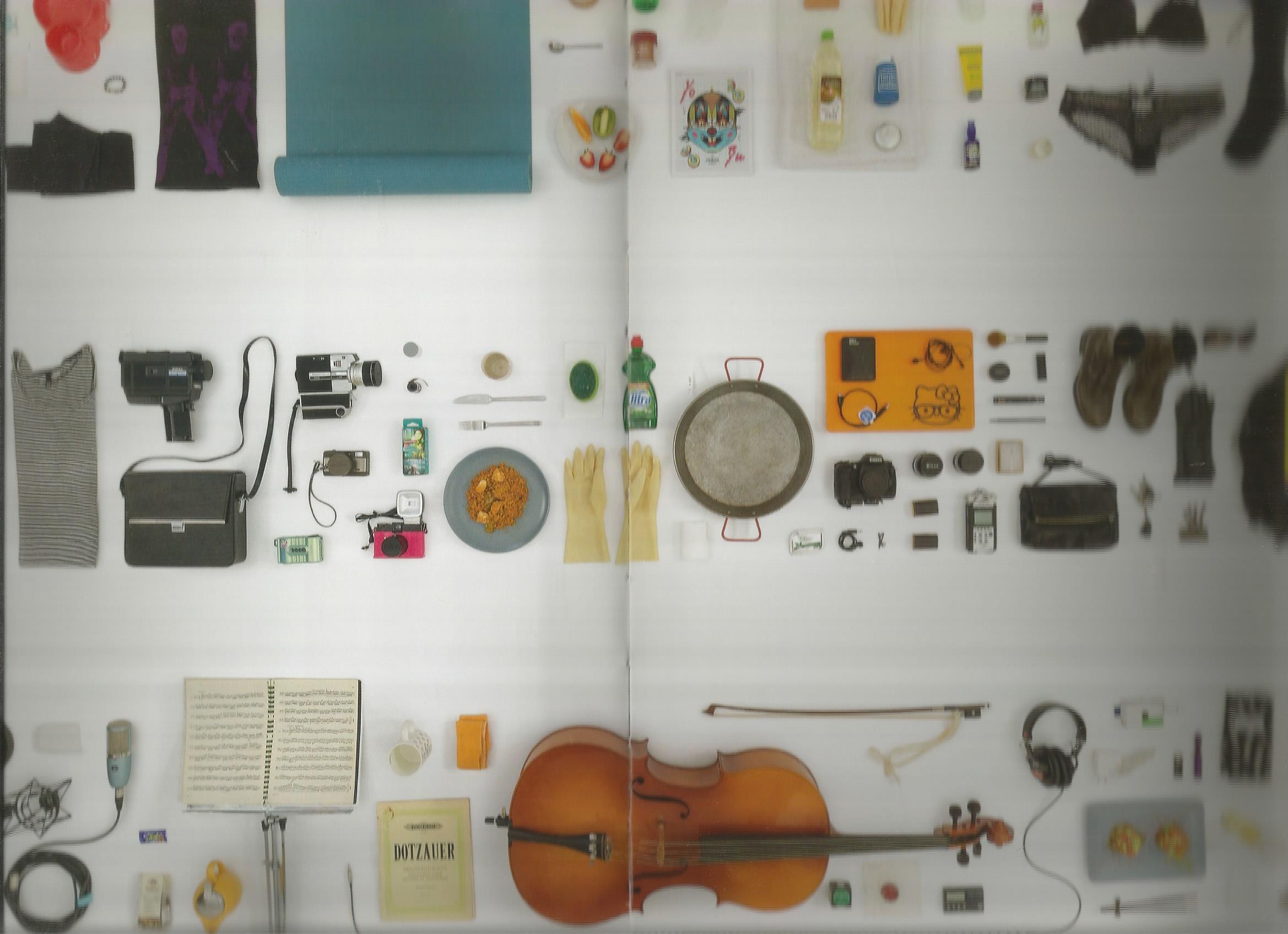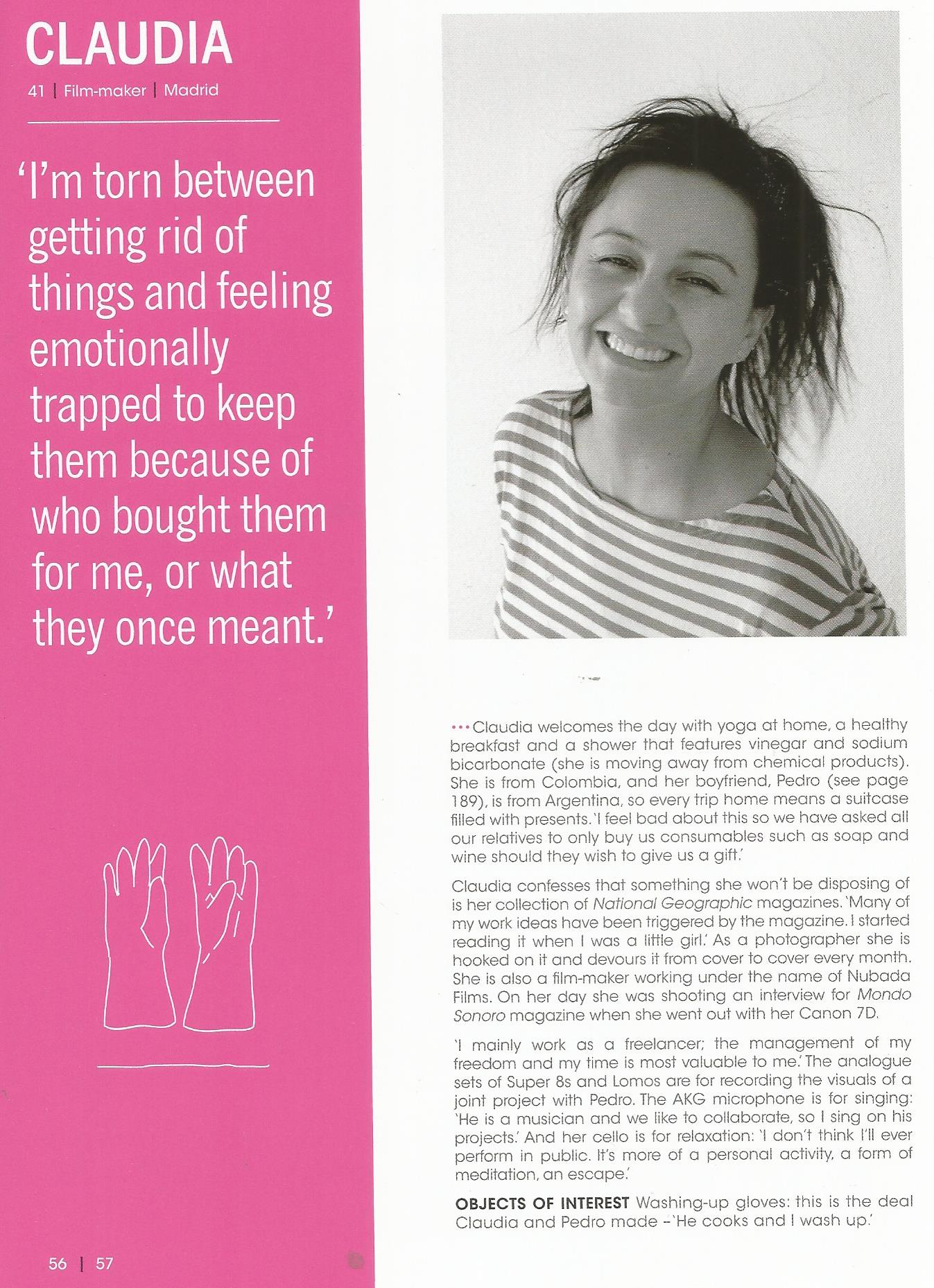Reflection, Psychological Theory and Multi-Modal Resources
In considering some of the issues raised in the Region 09 Cluster 1 Forum, especially a request that some model answer be provided, I decided to write this. However, on this occasion, I will not use material that directly relates to myself as learners on the course must for their TMA03. Instead I am going to use an extract from a recently published art work (Zuccotti, P. 2015 Everything We Touch: A 24-Hour Inventory of Our Lives London, Penguin Random House).
It may be improper to call this work ‘art’ since Zuccoti works under different labels, including that of ‘ethnographer’. Moreover, the method of the book has much in common with the way in which both anthropologists, archaeologists and historians are sometimes forced to ‘reconstruct’ the notion of the selves who people history from everyday objects that they touched every day. Is this a book of ‘reflection’?
Zuccoti (2015:3) says:
“…Imagine keeping a record of everything you touch in a day, from the moment you wake up to the moment you fall asleep. Now imagine gathering all those things together for a single photograph. What would that image day about you and your day? … What would they deduce about you? What would they miss?’
Let’s take an example: This is the photograph (Zuccotti 2015:54f.) of the objects touched in a day by ‘Claudia’:

Claudia, A film-maker from 
Madrid (Zuccoti 2015:57) includes amongst her objects the 'washing-up gloves that help her to distribute domestic tasks between herself and her boyfriend, Pedro.
In Bishop (2015:293f.), the 5 types of ‘self-knowledge’ or ways in which people perceive ‘themselves’ identified by Neisser (1998 cited Bishop 2015:291) or ‘their self’ are described and graphically illustrated. Claudia’s ‘selves’ are variously distributed in and between different objects in this photograph, and perhaps even in their order or organisation. From private to conceptual (the objects relating to cinematography, geography and reading music) to the ecological (perhaps from some of the same objects. Yet how do we describe the dividing lines. Are the items of underwear ‘private’, or ‘interpersonal’ or conceptual (perhaps there is an interest in lingerie design)? Do some items have more significance to a past or future self?
Another issue might relate to theories of ‘embodiment (Bishop 2015:297ff.). What, for instance are the boundaries of the ‘embodied self’. Do they stop at the physical skin, or are they extended by the scope of somatic senses to travel over distance – via smells, sight and hearing. How does ‘music’ then complicate that embodied self?
Moreover, the rubber-hand illusion (Bishop 2015:301f.) demonstrates that the boundaries of body ownership can be mentally manipulated consciously or unconsciously. Clothes sometimes take on the ‘meaning’ of body (are we back to lingerie and perhaps to the meaning of bodily sexuality)?
Hartmann argues that we perceive the body only in its relative embedment (Bishop 2015:307) in an environment and that the thickness of that embedment varies between persons, cultures and social groups. Claudia’s ‘embedment’ is thickened considerably by the presence of objects that extend her boundaries incalculably – digital and mobile devices for instance.
This is even more interesting if we read of Zuccoti’s other participants:, such as Vivienne (Zucotti 2015:245), a Japanese artist, film critic and drag queen, whose clothing objects both embed and extend self in various ways, or Guido (Zucotti 2015:101) an Argentinian teenager into outdoor sports, graphic art and wearing ‘masks’ at parties.
Of course there is nothing to stop you drawing reflections (written or multi-modal) from your own day or photographing the objects you touched in a day in an order that is meaningful to you. And then to reflection with the aid of theory!
All the best
Steve
Comments
New comment
Hi Steve
Thanks for making your blog visible to everyone - I hope once we get underway you will get useful feedback from your colleagues
Cheers
Alan